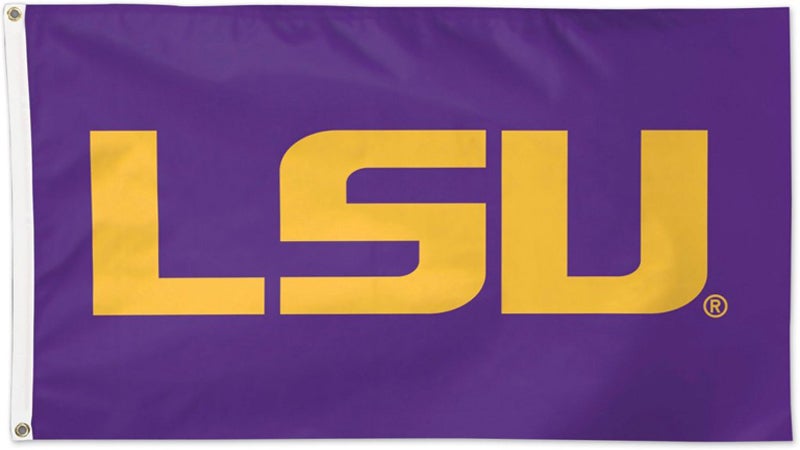LSU Professor Designs Underwater Robot to Study Shipwrecks
Published 8:30 am Sunday, February 13, 2022
|
Getting your Trinity Audio player ready...
|
BATON ROUGE – One might be surprised to learn there have been thousands of shipwrecks in the Great Lakes over the last couple centuries, the majority of which remain undiscovered. LSU Mechanical Engineering Assistant Professor Corina Barbalata is working alongside University of Michigan and Michigan Technological University researchers to design motion-planning algorithms for underwater robots to gather data from these shipwrecks that will then be sent to the National Oceanic and Atmospheric Administration, or NOAA.
The nearly $99,000 project, sponsored by NOAA and the University of Michigan, will focus on developing new technology and innovative methods to advance autonomous capabilities of marine robotic systems for search and survey of shipwreck sites.
“We want to see how we can deploy something at deeper depths in a smarter, cheaper way without human intervention,” said Barbalata, who serves as a co-principal investigator on the project. “Right now, the most common systems used are big remotely-operated vehicles that require a vessel, a crane, and specialized operators to drive them. The problem is they have a cable connected between the robot and the vessel, so you must be careful not to get the cable entangled. Also, you can’t move too far with an ROV because you are restricted by the cable. We are working on using smaller systems or robots that aren’t dangerous to the environment or shipwreck, and they can go very close to take photos.”
Barbalata, who did her postdoctoral work in underwater robotics at the University of Michigan before joining LSU, stayed in contact with a former colleague, Katherine Skinner, who serves as the principal investigator on this project. Skinner’s group is focused on the development of machine-learning methods for online shipwreck detection from sonar imagery, co-PI Guy Meadows of Michigan Tech is in charge of guiding and coordinating the field expeditions, and Barbalata’s group is focused on path planning (how the robot should move) to enable close-range autonomous surveys of the shipwreck sites.
LSU Engineering students working directly with Barbalata on this project include Mason Pesson (ME) of Baton Rouge, William Ard (ME graduate) of Baton Rouge, Samuel Jones (computer science) of Covington, La.; Chandler Lemoine (ME) of Baton Rouge; and Samuel Gilliam (ME) of Atlanta.
“The students are doing the heavy lifting on this project and preparing everything,” Barbalata said. “Without them, nothing would be possible.”
The BlueROV2 Heavy robot Barbalata and the students have in their lab has been modified to be fully autonomous and can reach a maximum of 300 meters, or 984 feet. They have named it Dory AUV after the fish in “Finding Nemo.”
How the robot would work is researchers deploy the robot from a small boat and wait a few hours for it to reappear after collecting data. It would send a signal and GPS coordinates to the operator’s phone, relaying where it is on the water’s surface. Then the researchers would retrieve it. A problem that smaller robots run into is the current, which Barbalata and her team are looking into, as well as increasing the robot’s battery life.
“The issue with underwater robotics is that it’s expensive making them smart and autonomous with a long-lasting battery,” she said. “Researchers and small groups need funding.”
Barbalata has also used this technology to study coral reefs—getting maps of the reefs and looking at them years later to see how they’ve changed. Small robots can also be used in the oil and gas industry for inspection and maintenance of pipes, underwater cable placements, and collecting geological samplings.
“These robots can basically gather information about anything in the ocean,” she said.
The first year of the two-year project will focus on experiments with the equipment to make sure it’s reliable, while the second year will involve deploying the equipment to find new archaeological sites. Field experiments will begin in May.
Barbalata and her fellow researchers are currently studying shipwreck sites in Thunder Bay National Marine Sanctuary, home to the majority of Lake Huron’s shipwrecks. Close to 100 shipwrecks here are protected by the sanctuary, which works to preserve these treasured sites.
As to why there are so many shipwrecks in the Great Lakes, Barbalata said the lakes were once a main route of transportation for traffic and fishing. There is even a Great Lakes Shipwreck Museum which states that upwards of 30,000 people lost their lives on these ships.
“For me, anything to do with underwater robotics is exciting,” Barbalata said. “But it’s also rewarding because we can discover a lot of new things. We know so much about the moon or land, but we know so little about our oceans. Another thing with shipwrecks is that it sometimes gives closure to people who lost someone in the accident. If you find something new that can bring closure, it’s a good use of technology.”




